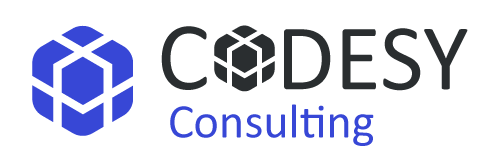
Choosing the right tech stack for your development project can indeed be a challenge, yet it’s a crucial step that significantly shapes the final outcome. During the initial development phase, this decision becomes a key determinant of the project’s success.
Taking the time to research, evaluate, and possibly even prototype with different technologies can provide valuable insights and pave the way for a tech stack that best suits your project’s requirements, ensuring a more successful end result.
In this article, we have listed down a select few exceptional tech stacks that truly shine in 2024 due to their effectiveness and will be more successful than the others. Additionally, you will learn about tech stack components and how to select the right tech stack for your project.
What is a technology stack?
A stack usually consists of database software, back-end or front-end technology, a particular operating system, and a web server. The set of technologies that you choose to use to build an end-to-end web app, mobile application, IoT, or similar application forms the tech stack.
Tech stacks have become essential for creating scalable and easily maintained online applications. They also dictate the kinds of apps you can create, the kind of modifications you can carry out, and the resources you’ll require to create your app.
Before selecting the tech stack that would be appropriate for the application or website, developers must take the project’s goals, requirements, and specifications into account. One of the most popular and easiest examples of a technology stack is the MEAN stack. MEAN stands for MongoDB-Express-Angular-Node.js.
What are the different components of a tech stack?
The different components of a tech stack typically vary depending on the specific technology stack being used. However, in a general sense, a tech stack usually consists of three main components:
Front-end: This refers to the part of the tech stack that deals with the user interface and user experience. It includes technologies such as HTML, CSS, and JavaScript, which are used to create and enhance the visual and interactive aspects of a website or application.
Back-end: The back-end of a tech stack handles the server-side operations and logic. It involves technologies like server-side programming languages (e.g., Python, Ruby, PHP, or Node.js) and frameworks, databases (such as MySQL, PostgreSQL, or MongoDB), and server infrastructure (like Apache or Nginx).
Infrastructure: The infrastructure component of a tech stack includes the underlying systems and services that support the application or website. This can involve cloud platforms (such as AWS, Azure, or Google Cloud), networking, storage, and deployment tools (like Docker or Kubernetes).
Most popular tech stacks for software development
The top 10 most popular tech stacks for web development in 2024 are as follows:::
Flutter
Created by Google, Flutter is an open-source UI software development kit that is used to create high-quality mobile applications across Android and iOS operating systems. Unlike other cross-platform frameworks, apps developed with Flutter feel native both on iOS and Android due to their support for platform-specific behaviors and conventions.
Flutter provides a rich collection of widgets. In Flutter, you craft user interfaces by assembling widgets together in a declarative manner. Widgets serve as building blocks for your app’s appearance. Flutter’s control over every pixel on the screen enables you to design your own widgets, offering a fully customized experience that captivates your users.
JAVA EE Stack
Formerly known as Java 2 Platform, Enterprise Edition, the JAVA EE stack is a collection of JAVA APIS owned by Oracle that software developers use to write server-side applications. Java EE streamlines application development by reducing the necessity for extensive programming. It achieves this by establishing standardized, reusable modular components and empowering the tier to automate various programming tasks.
Java EE applications are hosted on application servers, such as IBM’s WebSphere, Oracle’s GlassFish, or Red Hat’s WildFly server, all of which run either in the cloud or within a corporate data center.
MEAN Stack
MEAN stands for MongoDB, Express.js, AngularJS, and Node.js. MEAN is an end-to-end JavaScript stack largely used for cloud-ready applications. MongoDB serves as the database, Express.js facilitates server-side operations, Angular (formerly AngularJS) manages the front end, and Node.js operates as the JavaScript runtime environment on the server side. Integrating these technologies allows for efficient, streamlined development of web applications.
Since all the components are based on JavaScript and JSON, the integration between the components of the stack is intuitive and straightforward. Whether you’re building an API, a simple web application, or a microservice, MEAN is the ideal stack for building Node.js applications. Additionally, MEAN stack components are open source in nature and therefore allow a generous, free-of-charge opportunity for developers.
MERN Stack
Used by developers worldwide, the MERN (MongoDB, ExpressJS, ReactJS, NodeJS) stack is a collection of technologies used for faster application development. It allows the creation of a 3-tier architecture that includes frontend, backend, and database using JavaScript and JSON.
As all technologies mainly depend on JS, it significantly lowers the learning curve for any individual looking to utilize the MERN stack. Like other popular web stacks, it is possible to develop whatever you want in MERN but it majorly favors the development of cloud-based applications.
MEVN Stack
MEVN is a tech stack similar to MEAN and MERN except that it utilizes Vue.js to handle the frontend development. Vue.js is relatively new in the market but is being readily adopted due to its efficiency. It is a progressive front-end framework that facilitates the creation of interactive and dynamic user interfaces. Node.js serves as the backbone, enabling server-side JavaScript execution.
Its reactivity and component-based structure make it a popular choice among developers who prefer its approach over other front-end frameworks like Angular (used in MEAN) or React (used in MERN).
LAMP Stack
One of the most popular open-source software stacks, the LAMP stack is widely used for developing new custom web apps. Linux is the operating system layer and the backbone of the LAMP stack. Other technologies that are part of this stack include Apache, MySql, and PHP.
LAMP has a classic layered architecture, with Linux at the lowest level. The next layer is Apache and MySQL, followed by PHP. The four components of LAMP were picked as optimal solutions for developers who wish to host, serve, and manage web-based content. They provide a route for accessing content, software, and other web-based tools.
Ruby On Rails
Ruby functional programming language’s best current framework, Ruby on Rails, is an open-source framework for web development. Rails provides a pre-built development structure and all the tools you need to construct a web project, simplifying web development.
It implements the model-view-controller (MVC) paradigm, which gives databases, websites, and web applications a basic structure. It also employs responsive designs like JSON or XML for data transport and HTML, CSS, and Java for the user experience.
Rails provides a comprehensive development experience with services that extend to cater to both frontend and backend development, unlike many other languages and frameworks.
Python-Django
Free and open-source, Django is a Python-based web application framework that consists of various modules that facilitate development. It was designed to help developers take applications from concept to completion as quickly as possible.
Django’s main advantages are its clean, practical design and rapid development. Installed on a web server, the Django web framework may help developers quickly create a feature-rich, safe, and scalable web frontend.
Serverless Stack
A serverless stack refers to an architecture or framework where developers can build and deploy applications without the need to manage the underlying infrastructure or servers directly. Instead of managing servers or virtual machines, developers rely on cloud services provided by third-party vendors (like AWS Lambda, Azure Functions, and Google Cloud Functions) to handle backend functionality.
Serverless architectures automatically scale resources up or down based on demand. Moreover, it allows developers to focus on writing application code rather than managing infrastructure, allowing for faster development cycles and quicker time-to-market for applications.
ASP.NET
ASP.NET, developed by Microsoft, is a server-side web application framework designed for web development to produce dynamic web pages. ASP stands for Active Server Pages Network Enabled Technologies. It allows developers to build dynamic websites, web applications, and web services.
It encompasses various programming models such as ASP.NET Web Forms, ASP.NET MVC, and the latest ASP.NET Core. With its diverse models, ASP.NET caters to different development styles and scenarios.
ASP.NET Core emphasizes performance, modularity, and cross-platform compatibility, making it suitable for a wide range of modern web development scenarios.
How to choose the best technology stack?
Choosing the best technology stack for a project can be a crucial decision that depends on various factors. Some steps you can follow to help you make an informed choice are as follows:
Research available technologies
Explore different technologies, frameworks, and tools that are suitable for your project type. When exploring your options, you might want to consider factors such as the stack’s popularity, community support, documentation, and the track record of the technologies. Familiarity with its roots and background will help you decide whether the stack will be able to fulfill your project needs.
Assess team skills and expertise
Before deciding on a tech stack for your project, you must evaluate the skills and expertise of your development team. If they are not familiar with the technologies, then they will be hesitant to work with the new tech stack and their performance will be undermined.
Define project requirements
Defining project requirements involves a comprehensive understanding of the project’s objectives, scope, and specific needs. It entails outlining scalability expectations, performance benchmarks, security protocols, and integration necessities Your knowledge of these elements must be up to date to select a relevant tech stack.
Consider the project timeline and budget
This forms an important factor when choosing a technology stack as you might want to avoid technologies that have a large learning curve and require additional resources. Opt for technologies your team knows well to minimize learning curves and speed up development, essential for meeting tight deadlines.
Conclusion
Choosing the appropriate technology stack is a crucial choice that greatly impacts the outcome of any development project. Our exploration of the top tech stacks for 2024 showcased a diverse range of options catering to different needs and preferences. Additionally, knowing the elements—front-end, back-end, and infrastructure—enables developers to make decisions that are in line with the objectives of their projects.




